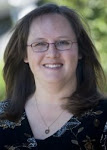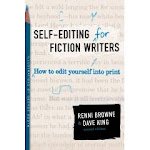Sunday, September 25, 2011
USING SCENE AND SEQUEL AS CHAPTER HOOKS
Monday, September 12, 2011
Conference Etiquette
- Seriously pray about and consider who you should meet in faculty appointments. Don't just take an appointment because there's an opening. I did that the first year. Signed up to talk to just about everybody-even if I had no intention of ever writing what they'd be interested in! Wasted my time and theirs.
- Be on time for your faculty appointments and be considerate when the faculty member says the time is up. I think most instructors are like me and try to stay on schedule in fairness to all those with appointments.
- Listen more than you talk. Like many others, I tend to talk too much when I'm nervous. And before I learned this lesson, the less I knew, the more I talked! The best use of your time is to make a short introduction, tell a little about your experience, ask a sensible question, and then listen. Don't plan your next question while the person is answering the one you just asked. Really listen. Take notes if necessary. Follow up with other questions as time allows.
- If you're getting a critique, don't defend every point the critiquer makes. If you do, you're wasting valuable time you could be using to learn. Of course, you may have questions you need answered for clarification, but don't argue or rationalize every point. Sincere questions are one thing, continually being on the defensive is another.
- Realize that instructors will most likely be unable to take your manuscript home from the conference. Remember, you're one person. Multiply that by 300-400 students. If they are interested, they'll give you instructions for sending it to them.
- Faculty members love to eat with students, answering questions and giving encouragement. But don't hog the conversation at meals. Occasionally there are those who dominate the conversation, treating the opportunity as one-on-one time. Not good.
- One more thing about meals with faculty: It's really nice when they can get a bite or two of food in.
- Be considerate: Don't shove your manuscript in their faces in the restroom. Don't interrupt a conversation or break in line to speak to someone. Don't bad mouth one instructor to another. ;-)
- And a common courtesy that's often missing in our culture today: thank you notes. Handwritten ones are especially nice, but email ones are certainly acceptable. I cringe every time I think of those kind people who invested in me...and yet, I never even wrote a thank you note. Sadly, that wasn't something that I was taught as a child, and I didn't even take such notes seriously until someone mentioned it regarding conferences. Now I try to write notes to everyone who does a kindness to me. Sometimes I forget, but it is something I want to do. They've invested time in me. The least I can do is invest time to write a note.
Sunday, September 4, 2011
Decisions, Decisions, Decisions

We all know how important the right decision is. The more important it is, the more time we take to process all the information we know that concerns that decision. Your character has reacted to the last scene's disaster. He has realized his dilemma of not knowing what to do next. After weighing all his options, he now makes a decision. And, yes, this is a very important decision!
Be sure to make your character proactive, that he actually makes the decision and that one is not forced on him (making him passive and not as interesting). Give him options, but don't make any of them easy. The more risky the decision, the more intensely involved is the reader. This is another way to raise the tension.
However, be sure that the decision is workable, even if the percentages are small (otherwise, you paint yourself into a corner). Now the reader is forced to turn the page to see if the decision is the right one and if it will work.
Remember:

*Goal
*Conflict
3 parts to a Sequel
*Reaction
*Decision
Scene and Sequel work together to move your story forward. Next time I'll show you how to use Scene and Sequel in all types of fiction.
Visit AnAuthor World's website (www.anauthorworld.com) for information on our fall writing conference, The Story Continues. It will be Saturday, October 15, 2011, at Furman University, 3300 Poinsett Highway, Greenville, SC. If you have questions about the conference or just writing questions in general, feel free to contact me at pam at anauthorworld dot com.














